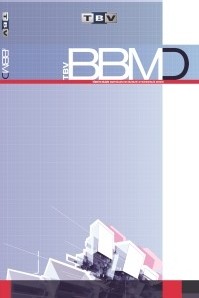Türkçe Hal Ekleri ve Öbekleri Kapsayan Ba˘glamdan Bağımsız Dil Temsili Kuralları
Özetçe —Düşüncelerin ve kültürün günlük hayattaki kullanımı olan diller bazı ortak yapılar barındırmaktadır. İsim öbekleri ve fiil öbeklerinin kullanımı; sıfat, zarf ve edat yapılarının kullanımı; bulunma bildiren ayrılma bildiren, kaynak bildiren öbekler tüm diller için mevcuttur. Bu ortak özelliklerin biri de dillerin yinelemeli yapısıdır. Tümce içinde yargı bildiren fiil yapıları kullanılarak iç tümceler oluşturulur. Türkçede alt tümce oluşturmak için tümcelerin içinde kullanılan sıfat fiil, zarf fiil ve mastarlardan faydalanılırken İngilizce için "who, which ve that" gibi anahtar kelimeler kullanılmaktadır. Tüm bu temel ortak özelliklere rağmen diller kendine özgü farklılıklar içerir. Özellikle eklemeli, bükümlü ve ayrımlı dillerin dil bilgisi kuralları arasında önemli farklılıklar vardır. Bükümlü bir dil olan İngilizce için oluşturulan gramer kuralları Türkçe için yeterli değildir. Bu çalışmada Türkçeyi temsil eden en uygun gramer kuralları incelenmiştir.
Anahtar Kelimeler:
Türkçe Ba˘glamdan Ba˘gımsız Gramer, Hal Ekleri, Türkçenin Öbekleri, Türkçe Biçimsel Dil Temsili
Turkish Context Free Grammar Rules with Case Suffixes and Phrase Relation
Abstract—Language has the ability to acquire and use complex systems of communication that represents the ideas and culture. Different languages have the same structures. Noun phrases, verb phrases usage; noun, adjective, adverb usage; source phrase, locative phrase and destination phrase are common for all types of languages. One of the common feature of the languages is its recursive structure. Sentences may have inner sentences which have judgment or action. In Turkish this recursive structure is done via using the gerunds (verbal nouns), participles (verbal adjectives) and con-verbs (verbal adverbs). In English this recursive structure is done via "who, which and that" keywords. Despite having many similar structures, different types of languages also have different structures. For example Formal Grammar Rules which are offered for English are not completely suitable for Turkish. In this paper the most appropriate Context Free Grammar rules are searched for Turkish.
Keywords:
Turkish Content Free Grammar, Case Suffix, Turkish Phrases, Turkish Formal Language Representation,
___
- [1] Backus, J.W.: The syntax and semantics of the proposed international algebraic language of the zurich acm-gamm conference. Proceedings of the International Comference on Information Processing, 1959 (1959)
- [2] Cakici, R.: Wide-coverage parsing for turkish (2009)
- [3] Chomsky, N.: A note on phrase structure grammars. Information and control 2(4), 393–395 (1959)
- [4] Chomsky, N.: Syntactic structures. Walter de Gruyter (2002)
- [5] Grimshaw, J., Mester, R.A.: Complex verb formation in eskimo. Natural Language & Linguistic Theory 3(1), 1–19 (1985)
- [6] Güngör, T., Kuru, S.: Representation of turkish morphology in atn. In: Proceedings of Second Symposium on Artificial Intelligence and Artificial Neural Networks. pp. 92–104 (1993)
- [7] Güngördü, Z., Oflazer, K.: Parsing turkish using the lexical functional grammar formalism. Machine Translation 10(4), 293–319 (1995)
- [8] Hoffman, B.: The computational analysis of the syntax and interpretation of" free" word order in turkish. IRCS Technical Reports Series p. 130 (1995)
- [9] van der Hulst, H.: Recursion and human language, vol. 104. Walter de Gruyter (2010)
- [10] ˙Istek, Ö.: A link grammar for Turkish. Ph.D. thesis, Bilkent University (2006)
- [11] Jiang, T., Li, M., Ravikumar, B., Regan, K.W.: Formal grammars and languages. In: Algorithms and theory of computation handbook. pp. 20–20. Chapman & Hall/CRC (2010)
- [12] Martin, J.H., Jurafsky, D.: Speech and language processing. International Edition 710 (2000)
- ISSN: 1305-8991
- Başlangıç: 2005
- Yayıncı: Türkiye Bilişim Vakfı
Sayıdaki Diğer Makaleler
Kadir TOHMA, İpek ABASIKELEŞ-TURGUT, Yakup KUTLU
Türkçe Hal Ekleri ve Öbekleri Kapsayan Ba˘glamdan Bağımsız Dil Temsili Kuralları
İlknur Dönmez, Prof. Dr. Eşref Adalı
Derin Öğrenme ile İki Boyutlu Optik Karakter Tanıma
Yerel İkili Örüntü Tabanli Veri Gizleme Algoritmasi: LBP-LSB
